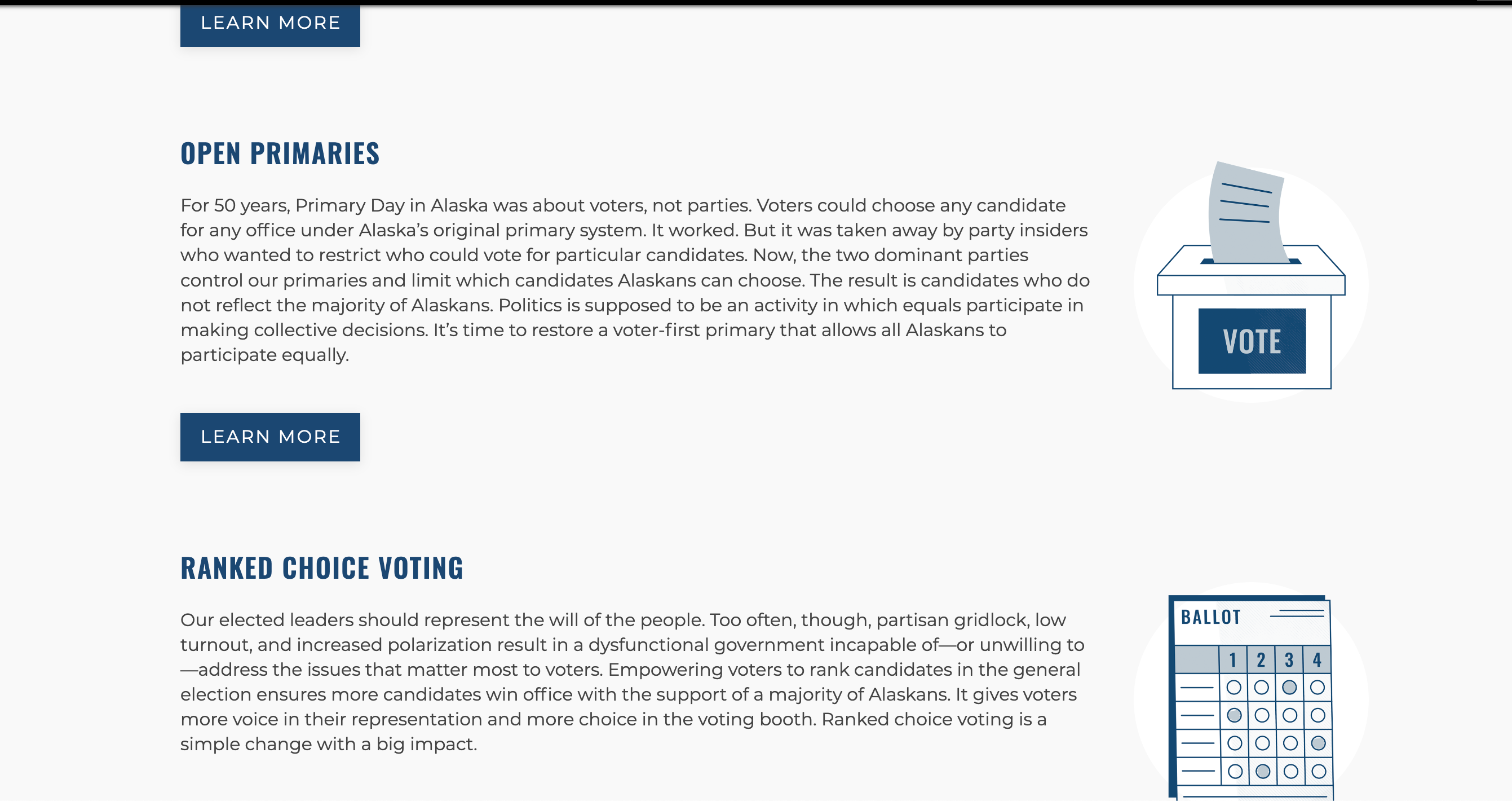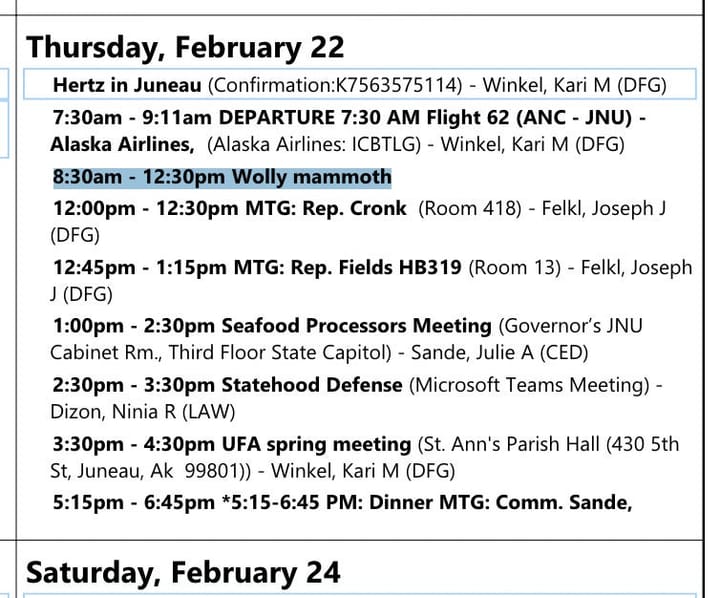Ranked choice voting isn't better or worse. It's different.
Let's talk about what Alaska's new election system does, not how it works.

Until recently, I always thought of the framework of Alaska's elections as being pretty much immutable and objective — not designed to achieve any specific result or political outcome. Voters had the freedom to choose candidates to represent them, and the Legislature could fiddle around with things like voter registration deadlines, but the overall structure of partisan primaries and a traditional general election never seemed like subjective choices up for debate and revision.
That changed in 2020, when a group of Alaska political operatives, with ample financial support from wealthy Outside donors, pushed a successful citizens initiative that transformed the state's voting system.
Northern Journal is a reader-supported publication. To receive new posts and support my work, consider becoming a free or paid subscriber.
This year, in the first campaigns held under the new framework, partisan primaries were gone, replaced by an open primary election in which all candidates, regardless of party, appear on one ballot and the top four advance to the general election.
General elections are now decided by a ranked choice system, in which votes for trailing candidates are redistributed to people's second and third choices if no candidate gets a clear majority in the initial tally. (Read the official description of the system here.) Proposals to adopt such systems have grown increasingly popular, and Nevada voters just took an initial step toward adopting one last week.
Boosters of more incremental voting-related reforms often have unstated political or partisan goals, even as they use efficiency-, election security- or access-related arguments as their public justification for change. But the Alaska reformers were fairly direct about their vision: Elect more moderate and less partisan candidates.
To restate this slightly, the initiative's architects wrote their reforms to target their desired outcomes — namely, making it harder for extremist candidates to get elected, and easier for centrist ones. They argued that Alaska’s partisan primaries were set up to reward polarizing politics instead of compromise, and that voters were free to choose a different system.

“The two dominant parties control our primaries and limit which candidates Alaskans can choose,” the ‘yes’ campaign wrote on its website in advance of the 2020 election. “The result is candidates who do not reflect the majority of Alaskans.”
The campaign laid bare what should have been obvious to me previously — that the overarching structures of elections themselves could be used and modified to achieve specific political ends.
There's been a lot written and said about the new election framework's origins and process — how complex it is or isn't, how much it was designed to benefit one candidate in particular. (Her name starts with “L” and ends with “isa Murkowski.”) But one of the most straightforward ways to assess the system is to look at the candidates it helped elect in its first big test last week, and how those results diverge from the old system's.
What that assessment shows is that open primaries and ranked choice voting will likely cost a number of conservative Republicans seats — one in the U.S. Senate and several in the state Legislature — filling those positions with more moderate politicians instead.
These include:
• The South Anchorage state Senate race where centrist Republican Cathy Giessel narrowly leads incumbent GOP Sen. Roger Holland, and appears likely to win once the ranked choice system kicks in later this month. Giessel was the incumbent in this seat two years ago, but she got barely 35% of votes in the GOP primary against Holland, who ran far to her right and won in a landslide. Giessel almost certainly would have lost to Holland again this year if forced to run in a Republican primary; under the new system, she won the open primary and appears poised to return to the Legislature.
• The Kenai Peninsula state Senate race in which hardline conservative Republican Tuckerman Babcock, a former chief of staff to GOP Gov. Mike Dunleavy, appears likely to lose to Republican Jesse Bjorkman, a teacher and borough Assembly member. Bjorkman ran as a more pragmatic conservative alternative to Babcock, and likely would have lost in a closed GOP primary. But now he appears on track to win once the votes of his race's third-place finisher, independent Andy Cizek, are redistributed in the ranked choice tally.
• A similar scenario is playing out in a Kenai Peninsula state House race, where pharmacist and Soldotna City Council member Justin Ruffridge, a Republican, leads incumbent GOP Rep. Ron Gillham. Gillham is one of the House's most conservative members and likely would have beaten Ruffridge in a closed GOP primary. But Ruffridge — who, like Bjorkman, has run as a pragmatic Republican alternative to the incumbent — won the open primary and appears set to win the general election, too.
• Of course, there's the fate of incumbent GOP U.S. Sen. Lisa Murkowski, who narrowly trails conservative Republican Kelly Tshibaka in preliminary counts but appears likely to be re-elected once the ranked choice system kicks in. Murkowski risked losing a closed GOP primary against Tshibaka, who ran to the right of the incumbent and was endorsed by former President Donald Trump. Instead, Murkowski appears to be on track for another six years in the U.S. Senate.
There are additional races where it's less clear, but still possible, that the new election system helped moderates win or keep their seats: the re-election of GOP House Speaker Louise Stutes of Kodiak, Rep. Kelly Merrick's bid for a state Senate seat that appears likely to succeed, and Democrat Mary Peltola's likely defeat of Republicans Sarah Palin and Nick Begich III in the race for Alaska's sole U.S. House seat.
But even ignoring those, a clear picture emerges that the elimination of the closed GOP primary and the adoption of ranked choice voting has had dramatic effects on Alaska politics, and may help tip control of the closely divided state House and Senate toward bipartisan coalitions instead of Republican-led caucuses.
Whether those effects are positive, negative or neutral is a question up for discussion — one that's very likely to be debated through an anticipated campaign to repeal ranked choice voting and open primaries. Such a campaign could take place in the form of a new citizens initiative, or by state legislators voting to repeal or amend the old one.
While many conservatives support a repeal, a new dynamic now stands in their way: Some of the lawmakers who would have to approve a legislative repeal are the ones that the new system likely just helped elect. It's probably not realistic to expect politicians like Giessel, Bjorkman, Ruffridge, Stutes and Merrick to be ‘yes’ votes for repeal — and those legislators could help thwart such a step for the next two years in the Legislature.
That leaves another citizens initiative as the most likely path to a repeal. But that outcome appears unlikely, too, if polling by the 2020 reformers holds up: It showed that more than 60% of this year's primary voters approve of the new system.
Are there key races I missed? Other political dynamics worthy of attention? Do you have story or column idea? Drop me a line at natherz@gmail.com or 907-793-0312.
In my previous newsletter, I misspelled Amory Lelake’s last name, and regret the error.
Northern Journal is a reader-supported publication. To receive new posts and support my work, consider becoming a free or paid subscriber.



